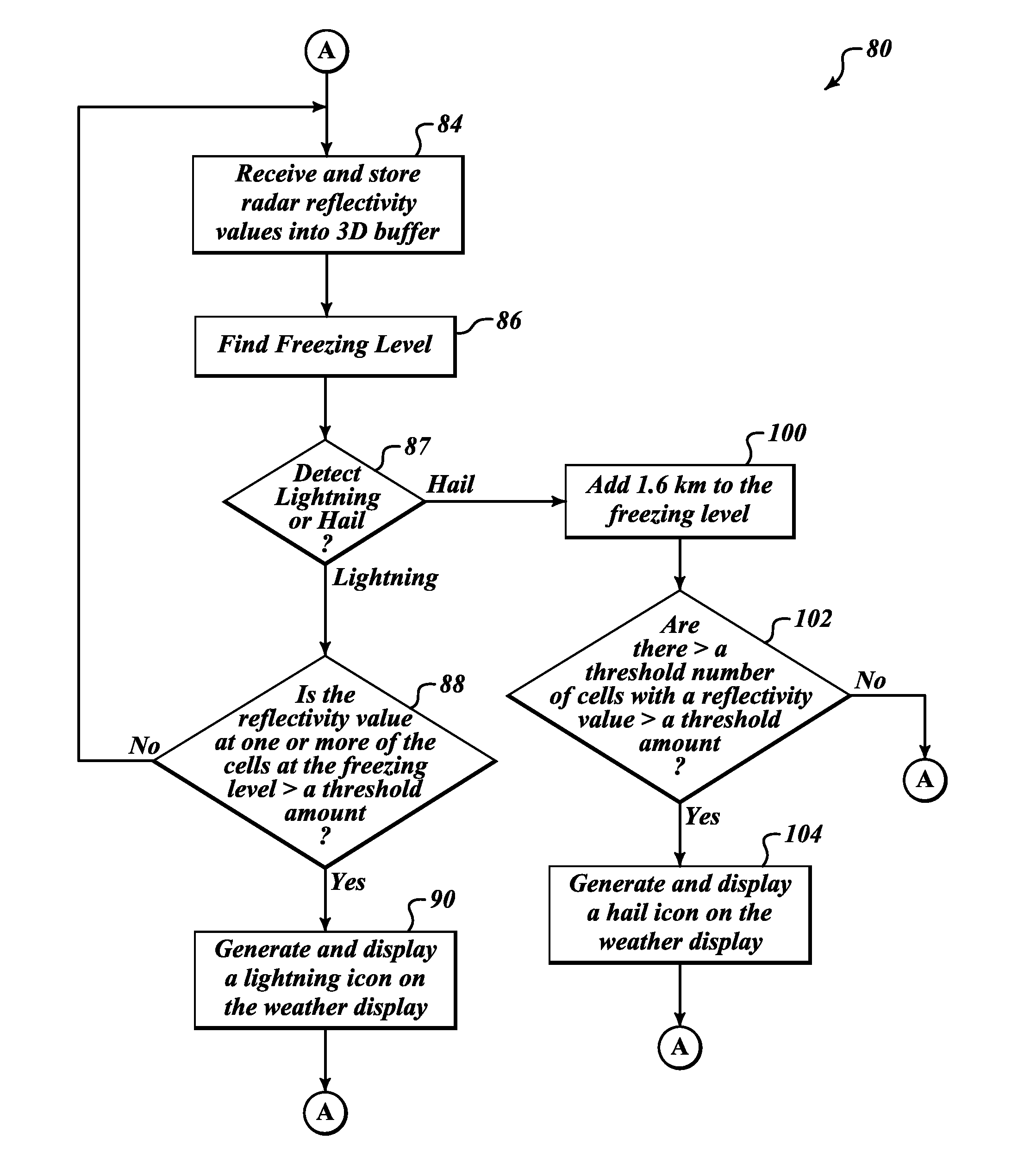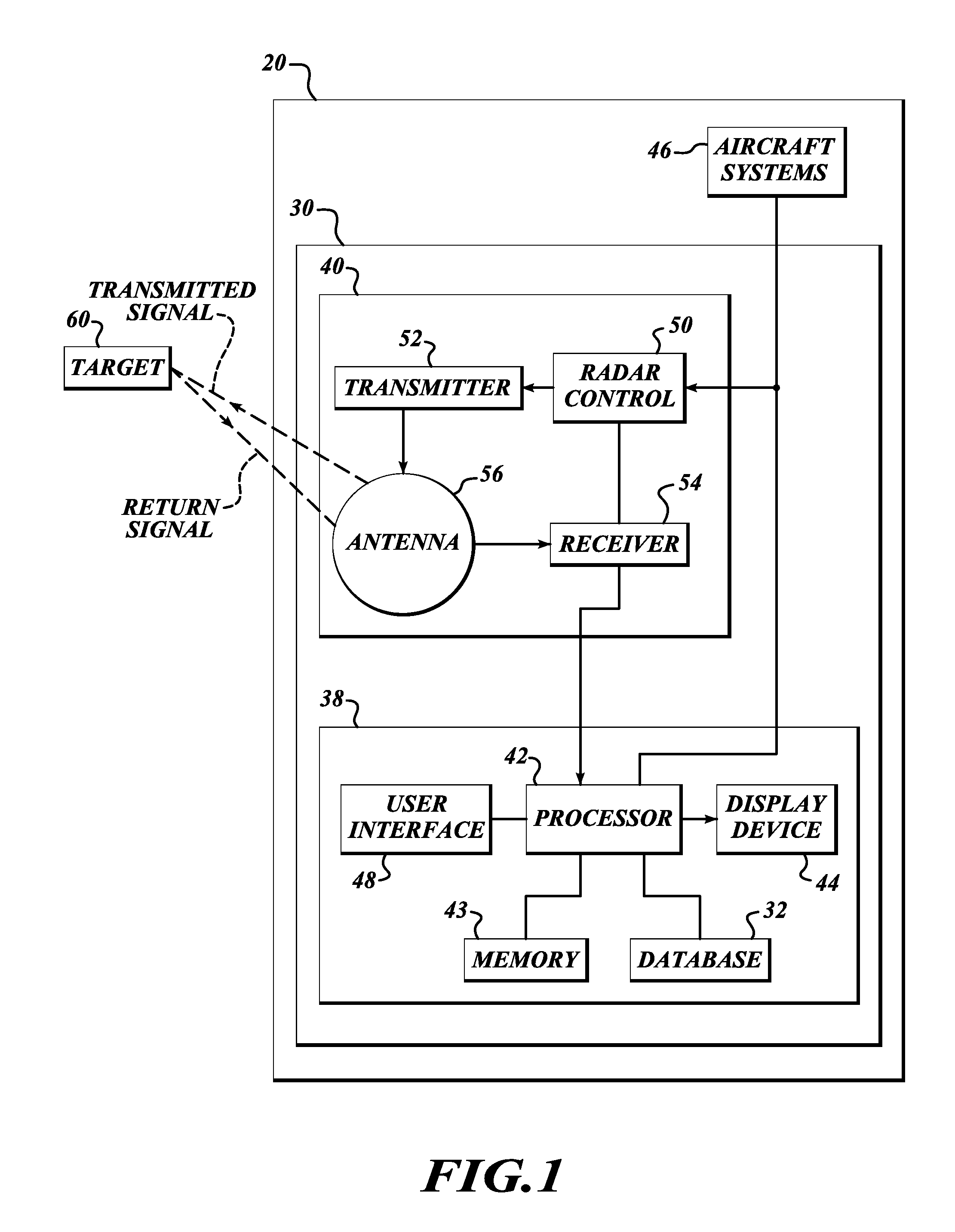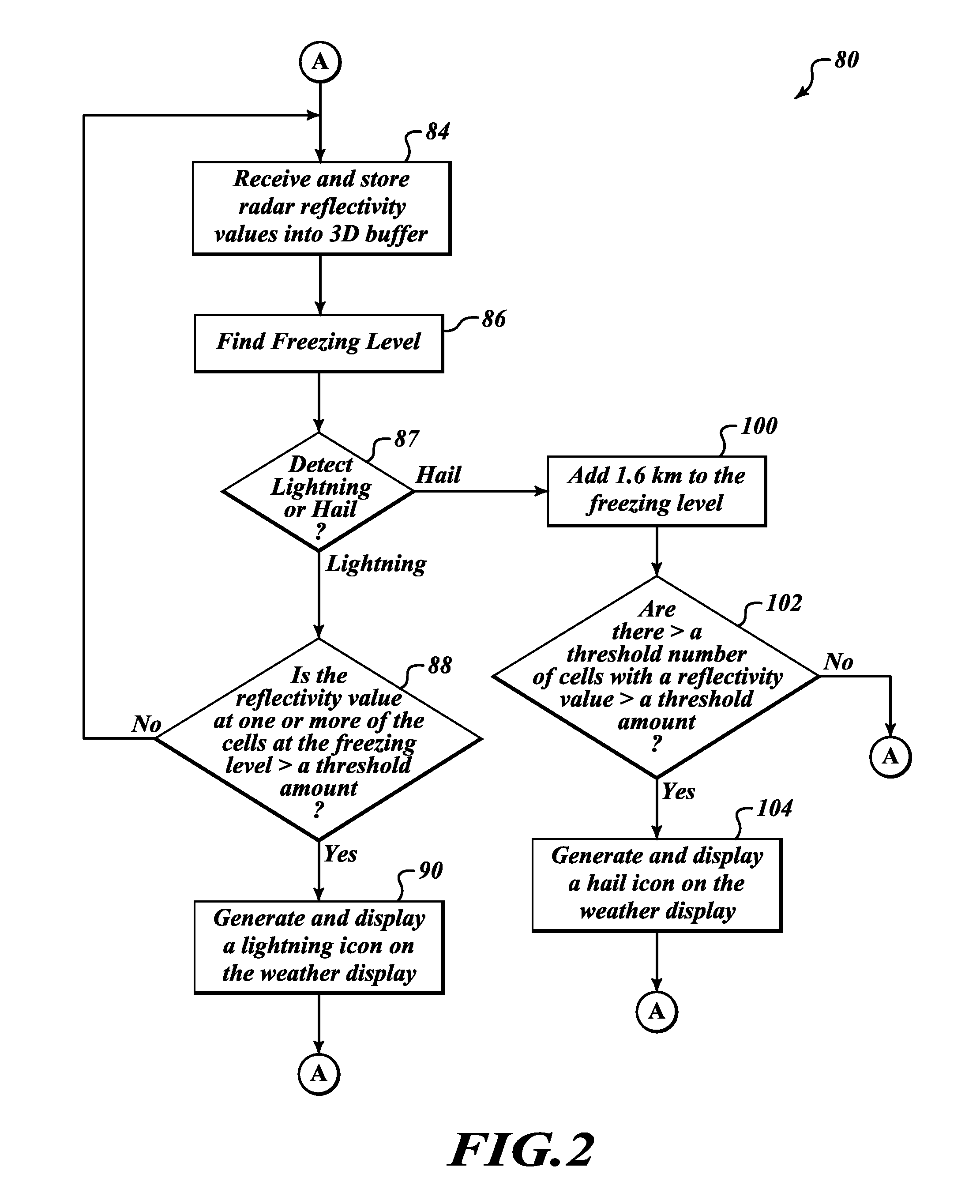Systems and methods for infering hail and lightning using an airborne weather radar volumetric buffer
a weather radar and volumetric buffer technology, applied in meteorology, climate sustainability, instruments, etc., can solve the problems of unsatisfactory calibration, limited weather reflectivity and turbulence display functions, and the radar displayed reflectivity is not necessarily well calibrated
- Summary
- Abstract
- Description
- Claims
- Application Information
AI Technical Summary
Benefits of technology
Problems solved by technology
Method used
Image
Examples
Embodiment Construction
[0017]FIG. 1 illustrates an embodiment of a weather display system 30 for providing improved weather radar display functionality. The exemplary weather display system 30 includes a weather radar system 40 and a display / interface front-end 38, and receives information from an aircraft system 46. The display / interface front-end 38 includes a processor 42, memory 43, a display device 44, a user interface 48, and a database 32. An example of the radar system 40 includes a radar controller 50 (coupled to the user interface 48), a transmitter 52, a receiver 54, and an antenna 56. The radar controller 50 controls the transmitter 52 and the receiver 54 for performing the sending and receiving of signals through the antenna 56. The weather radar system 40 and the display / interface front-end 38 are electronically coupled to the aircraft system 46.
[0018]Radar relies on a transmission of a pulse of electromagnetic energy, referred to herein as a signal. The antenna 56 narrowly focuses the trans...
PUM
 Login to View More
Login to View More Abstract
Description
Claims
Application Information
 Login to View More
Login to View More - R&D
- Intellectual Property
- Life Sciences
- Materials
- Tech Scout
- Unparalleled Data Quality
- Higher Quality Content
- 60% Fewer Hallucinations
Browse by: Latest US Patents, China's latest patents, Technical Efficacy Thesaurus, Application Domain, Technology Topic, Popular Technical Reports.
© 2025 PatSnap. All rights reserved.Legal|Privacy policy|Modern Slavery Act Transparency Statement|Sitemap|About US| Contact US: help@patsnap.com



